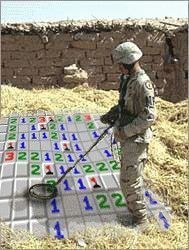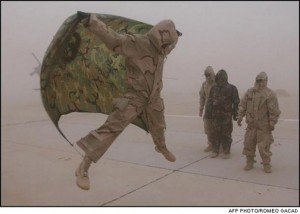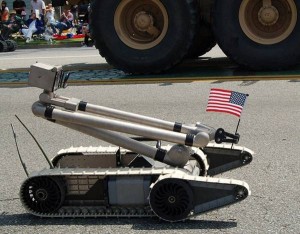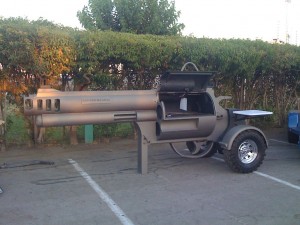[Abstract]
The purpose of this document is to explain different networking protocols and models by explaining what is needed to upgrade a network from a bus topology to a star topology. Also included within this document is information about a network design to allow for maximum users with maximum throughput for 100Mbps to the customer’s desktop within the star topology.
[Content]
When considering changing the topology on a business network, it is important to know information about different network topologies and benefits of each. The four most commonly found network topologies are the star, ring, bus, and mesh (Mitchell, 2008). The star topology has a centralized device, that which is like a hub of a wheel, with multiple connections going out to different devices. The ring topology has multiple devices along a network ring and they can either send data only one way or they can send data bi-directionally. The bus topology has a single path with multiple devices connected along that path and terminators on each end of the path. The bus topology was most commonly found as using coaxial cable at 10Mbps with multiple computers connected in series to it. The mesh topology has multiple devices with multiple paths between devices; this is by far the most complex and most robust topology out of the group. Knowing about the different types of network topologies, helps a customer know which will best suite their needs.
When making a decision of upgrading from a bus topology to a star topology, there are many choices that need to be made prior to making the best decision. The first most important decision to be made is about what type of media is going to be used. If existing CAT-5 or CAT-5e cable is present, it would be recommended to reutilize that, however since it is most likely that coaxial cable was used the other option is to use fiber optic cable. Fiber optic cable would be an ideal choice in the event that long distances or network security are major concerns for the computer network. Since neither of these was identified as possible issues, we’ll assume that CAT-6 cable is being used. The reinstallation of the network infrastructure is the most major part for upgrading from a bus to a star topology.
In order to get a complete idea of what is needed to upgrade the network, all necessary hardware pieces need to be identified. First and foremost if the local computers do not have 100BaseT network interface cards (NICs) in them, then enough NICs need to be purchased to populate all of the necessary computers. Additionally drop boxes and patch panels will be needed to be purchased for the infrastructure to interconnect the communications closet to the local users work areas. Depending on how many users are going to be on the network, I would recommend purchasing smaller Cisco 3750 switches for each office. The Cisco 3750 switches need to have 2 Gigabit uplink ports to be able to connect to the centralized hub of the topology. I recommend using a Cisco Catalyst 4506, 6509, or 6513, depending on how large the network is going to be. If all users are going to be located in one building, then just one major switch can be utilized with no secondary switches needed, however if a few buildings or one large building is going to be used, then there may be a need for additional switches. I also recommend the Cisco catalyst switch to have redundant power supplies, supervisory cards, and uplinks to the router that is routing traffic out of the local area network. This is due to this one piece of equipment being the single point of failure, having redundant power supplies, supervisory cards, and uplinks all ensure there is minimal downtime in the event of a hardware failure.
Even though some equipment will be located at the local users work areas, some of the equipment will be located in the communications closet. It is recommended that the central core switch is located in the communications closet because physical security ensures a raised level of security on a computer network. Also located in the communications closet will be a patch panel that with the use of patch cords will interconnect the core switch to the local user’s workstations. Also located in the communications closet should be an uninterruptible power supply (UPS). The UPS should be large enough to keep all equipment in the communications closet online in the event of a power outage. Also located in the communications closet should be the router and point of demarcation for the LAN to be routed out of the building. All necessary core communications equipment, with supporting power equipment, and horizontal distribution for the network should be secured within the communications closet.
There are some key steps that need to be taken in order to ensure maximum network security and throughput can be maintained. All critical network, power, and horizontal distribution equipment should be locked and secured within the communications closet. Physical security is one level to ensuring the complete network is secure. Additionally, the configuration of all networking devices should be using port security. This ensures that only authorized computers are provided with network connectivity. Third it is recommended that any unused ports on any networking equipment are disabled. The horizontal distribution patch panel should only have patch cables for ports that are being used to be connected to the core switch. This ensures unauthorized users do not plug an unauthorized device into an open port on the network infrastructure to obtain network connectivity. To maximize network throughput it is recommended that wherever an additional switch is being used to utilized two uplink ports from that switch to the core switch and establish a Gigabit EtherChannel (GEC). The GEC establishes a two gigabit connection between switches and ensures there is enough bandwidth necessary to support all users (Cisco). Maintaining network security and maximum throughput on a network are essential for both protecting the network and ensuring scalability of the network, today and in the future.
In conclusion, when upgrading from a network bus topology to a star topology it is important to invest, not only in the infrastructure, but also in the core devices. By making the investment the network can maintain a high level of security, as well as, a high level of scalability. Proper configuration of networking devices also ensures a high level of security and a maximum level of data throughput for all users. Security all critical networking equipment in the communications closest guarantees the star topology is a more ideal choice to meet all the company’s business needs.
References
1. Mitchell, Bradley Topologies – Network Topologies – Types of Topology Examples – Bus Ring Star. Retrieved September 7, 2008, from Topologies – Network Topologies – Types of Topology Examples – Bus Ring Star Web site: http://compnetworking.about.com/od/networkdesign/a/topologies.htm
2. Catalyst 5000 Family Software Configuration Guide (6.3 and 6.4) – Configuring Fast EtherChannel and Gigabit EtherChannel [Cisco Catalyst 5000 Series Switches] – Cisco Systems. Retrieved September 7, 2008, from Catalyst 5000 Family Software Configuration Guide (6.3 and 6.4) – Configuring Fast EtherChannel and Gigabit EtherChannel [Cisco Catalyst 5000 Series Switches] – Cisco Systems Web site: [URL Removed Broken link]











































































